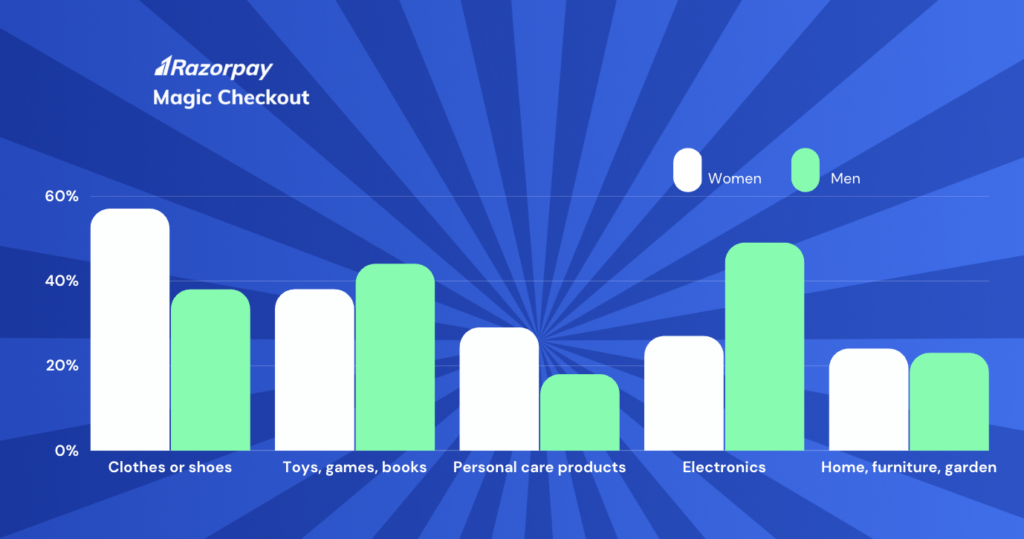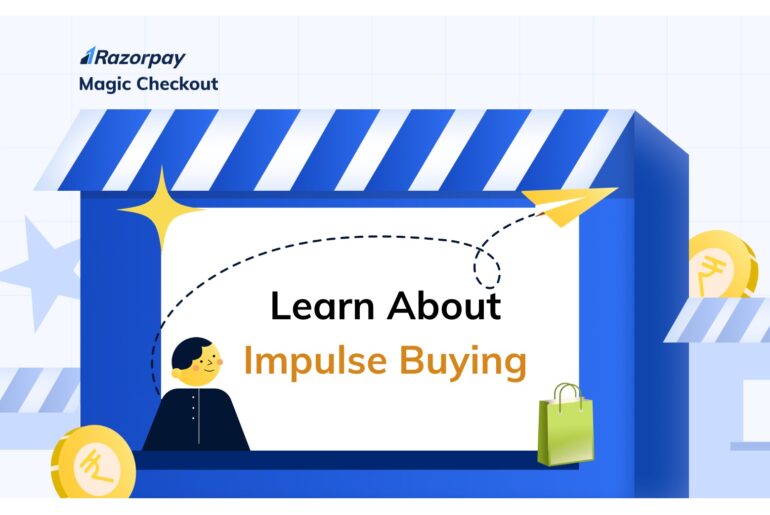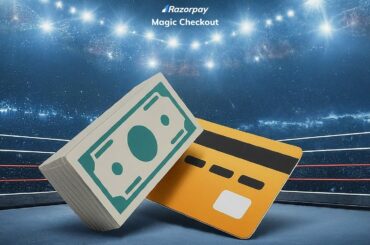Updated on 28th August, 2023
Impulse buying – a swift, subconscious decision that turns the virtual window shopper into a delighted customer. It’s that enchanting force compelling shoppers to add that extra item to the cart, the irresistible deal they simply can’t resist. But what if we told you this captivating dance isn’t confined to shoppers? Welcome to the world where e-commerce and psychology intertwine, where impulse buying’s allure is as much for the sellers as it is for the buyers.
In the realm of online commerce, impulse buying is the siren’s call, beckoning both customers and e-commerce stores into a mesmerizing waltz. While it’s often studied through the lens of consumers, today, we turn our gaze to the conductors of this orchestra—the online retailers themselves.
Embark on this riveting exploration as we dive into the intriguing universe of impulse buying. Yet, this time, the spotlight shines on a less-explored angle: how e-commerce stores can artfully navigate the fine line between reaping the rewards and stumbling into pitfalls. Join us in deciphering the do’s and don’ts that differentiate soaring success from a cautionary tale.
Table of Contents
What is Impulse Buying?
Impulse buying is like a surprise gift your customers give themselves. It’s that moment when they decide to purchase something without initially planning to. Imagine your customers browsing through your online store, and suddenly, they find themselves adding an item to their cart that they hadn’t even thought about before.
Impulse buying happens when emotions and desires take the lead, rather than careful deliberation. It’s that unexpected choice that adds a spark of excitement to their shopping journey and sometimes leads them to explore products they hadn’t intended to buy.
 Impulse Buying- The Psychology Behind it!
Impulse Buying- The Psychology Behind it!
As per Impulse and Self-Control From a Dual-Systems Perspective, a research work conducted by social psychologists Wilhelm Hofmann, Malte Friese, and Fritz Strack, here’s what drives impulse buying behavior:
- Customers’ personality traits
- Customers’ sociocultural values
- Customers’ demographic factors
- Customers’ attitudes toward buying behavior and underlying buying beliefs
In the intricate tapestry of impulse buying, threads of influence are woven from within and without. Behold the interplay of internal forces, where emotions reign, and external cues, where surroundings sway. Like a symphony, these elements converge, harmonizing to coax forth the spellbinding dance of impulse buying behavior.
Ever heard of retail therapy or self-gifting? They’re more than mere phrases; they’re gateways into understanding impulse buying’s psychology. Picture this: an emotion-laden moment meets the allure of a product, and suddenly, retail therapy becomes more than just words. It’s the whirlwind of emotions transforming into tangible delight.
Impulse Buying Behavior- An Example
Once upon a bustling afternoon, a tale of impulse buying unfolded.
- A ramen enthusiast strolling the streets when fate intervenes in the form of a quaint Japanese eatery. What follows is a series of events that dance between desire and decision, painting a portrait of impulse in action.
- Deep within the customer’s mind, a chorus of cravings awakens. The allure of ramen noodles resonates, stirring desires from the depths of their being. A symphony of urges surges forth, setting the stage for what’s to come.
- Yet, as they stand before the restaurant’s window, a battle brews between the internal and the external. The mere sight of the ramen noodles, perfectly captured in an image, becomes a formidable force. The broth’s aroma wafts through the air, teasing the senses, and the customer’s resolve trembles.
- Emotions surge like waves, overwhelming hesitation. With a heart now firmly in control, they step inside. An order is placed, and a bowl of ramen noodles materializes—a culinary masterpiece born from a blend of emotions and surroundings.
This is where Wilhelm Hofmann’s insight takes the stage. Past experience intertwines with the present, forming a tapestry of memories and desires. The taste of ramen noodles once savored, the joy experienced, and the tantalizing thought of reliving it all fuse into a cluster of yearning.
And so, an ordinary ramen craving transforms into an impulse buying spectacle. The customer, carried on the wings of their own desires, indulges in an unexpected delight. From the intricate interplay of internal cravings to the undeniable influence of external cues, this tale serves as a microcosm of the fascinating world of impulse buying—one where ordinary moments can spark extraordinary decisions.
Impulse Buying Behavior- Stats
In the ever-shifting landscape of consumer habits, statistics often reveal fascinating tales that illuminate the intricacies of human behavior. Brace yourself for a journey into the realm of impulses, where data paints a vivid portrait of shopping proclivities.
According to the intriguing insights from Statista, a distinct gender divide emerges in the realm of impulsive purchases. Women take the lead when it comes to spontaneous indulgence in lifestyle products like clothes and shoes. There’s something almost poetic about how a fleeting desire for a new pair of shoes can turn into a click of the “Buy Now” button.
Yet, the narrative pivots dramatically when the spotlight shifts to the universe of electronics. Here, the tables turn, and men step into the limelight of impulsive decision-making. The magnetic pull of cutting-edge gadgets and futuristic tech seems to be the siren song that beckons their impulses.

But let’s travel beyond the confines of gender and explore the landscape of a diverse market like India. Here, the tales of consumer impulses are anything but ordinary. A poll conducted by TOI uncovers a striking revelation: impulsive and compulsive buying behaviors have nestled deep within the Indian consumer psyche. An astounding 79% of consumers admit to a shared sentiment—they’re poised, ready to pounce, but only when the stars align in the form of an irresistible deal. Patience becomes their armor, wielded with precision as they play the waiting game, ever vigilant for that one golden opportunity.
As we explore these statistics, it’s evident that the world of consumer choices is a mix of desires woven into a fabric of preferences. From the gender-driven impulses in the fashion realm to the calculated waiting game played by Indian shoppers, each statistic narrates its own enchanting story—a story that invites us to peer beyond the numbers and delve into the complex dance of the human heart and the market’s pulse.
In addition to showing impulsive and compulsive buying behavior, consumers are “dealaholics and hardcore value-for-money seekers,” said Biswarup Banerjee, head of marketing communication at Ipsos in India.
5 Reasons Why Customers Impulse Buy
Now that you have unraveled the psychological elements that underlie these impulsive purchases, let’s venture forth to uncover the driving forces propelling shoppers into instant action.
1. The Thrill of a Deal
Impulse buying isn’t solely about extravagant splurges; it often springs from a pragmatic place. Picture this: a product catches a shopper’s eye, not just for its charm but for the promise of long-term savings.
Slickdeals’ survey reveals a clear trend – an impressive 52% of respondents prefer grabbing deals rather than paying the full price. Sales promotions play a significant role in attracting budget-savvy consumers who enjoy getting more for their money. When the math works in their favor, they eagerly make purchases, fueled by the excitement of snagging a bargain.
2. Unveiling Physical Cues
A subtle driver of impulse purchases lies in the world of physical cues. As the consumer’s journey unfolds, external elements take center stage, orchestrating a dance of impact. Imagine this as a symphony of senses:
Store Environment: A harmonious environment, awash with positive vibes, entices exploration and unexpected purchases. Positive emotions fuel impulse buying and a pleasant ambiance becomes the stage for impulsive decisions.
Background Music: Background music does more than just play; it affects the mood. Research shows that gentle tunes can make shoppers slow down and stay longer, which often leads to them spending more.
Salespeople: Salespeople, armed with charm and knowledge, are like sparks for spending. Their advice, ideas and friendly help create the scene for informed impulse buying.
Promotions: The allure of “Buy One, Get One” and tantalizing discounts speaks to the innate desire for more. Promotions like free samples, vouchers, and giftbacks play a strategic role in stirring impulsive purchases.
3. The Call of Instant Gratification
In the realm of instant gratification, emotions reign supreme. When stress, excitement, or anxiety courses through the veins, rationality retreats. E-commerce stores will easily find customers meandering on an online shopping spree, swayed by momentary whims.
Princeton University’s research casts a spotlight on the inner struggle – the battle between short-term pleasure and long-term logic. In the aisles of a store, this internal conflict plays out in real-time. The logical side pleads for restraint, while the emotional tide embraces immediate joy. It’s a tug of war where both sides have their victories, but in the world of retail, sensory overload tips the scales toward impulse.
4. The Art of Product Placement
Have you ever wondered why a shopping list seems to grow while a customer strolls through the store? It’s all thanks to clever product placement – the unseen conductor of a shopping journey. Every shelf, every corner, and every arrangement is thoughtfully organized to make a customer want more. The show begins with the window display – a canvas for catching their eye and making them curious. Research suggests that window displays can spark impulse desires, especially when the things shown are really popular.
But the magic doesn’t stop there. The displays right where a customer pays, right where they wait in line, are a retailer’s last move. As a customer stands there, their eyes find these showcased items, urging them to add just a bit more to their cart – an impulse, a last-minute treat.
5. Novelty: The Impulse of Discovery
Amidst the array of shopping triggers, one key stands out – novelty. Impulse buying isn’t solely tied to deals or displays. Enter the captivating universe of new experiences, where the enchantment of novelty casts its irresistible charm.
Imagine this: the intrigue sparked by something shoppers have never come across. Whether it’s on a store shelf or on social media, novelty grabs their attention. It’s the excitement of discovering something extraordinary, something beyond the usual.
Fascinating research by Ridgeway, Kukar-Kinney, and Monroe gives us a peek into the minds of impulse buyers. They uncover a specific type of shopper: those who seek out sensations and love embracing new things. In the world of novelty, these folks discover a sense of comfort, a rush of positivity guiding their choices.
The lesson here is clear – your product selection should sing with innovation. Listen to your customers, follow the cues of sales, and curate a collection that ignites curiosity. By offering items that are distinct and that create a feeling of exclusivity, you set the stage for excitement to shape decisions. The outcome? A surge in sales, powered by the enchantment of novelty.
Impulsive Buying: The Ethical Strategy
When the urge to shop impulsively strikes, reason often takes a backseat to desires. Logic gives way to spontaneous choices fueled by emotions. This is when impulse buying takes over, even pushing aside practical things like budgets, for the sake of instant satisfaction.
Yet, for ethical e-commerce businesses, a bigger role awaits – guiding responsible impulse buying. It’s not just about making money; it’s about building a trustworthy connection. In a world full of options, embracing ethics in your strategy is both noble and smart, creating an atmosphere where customers feel respected and empowered.
Personalized Harmonies
Encouraging impulse buying is like creating a music show. Imagine suggesting products that really match what customers like making their purchases more valuable. Personalized suggestions, picked just for them, create a tune that shoppers really enjoy. It’s like a special song for each person.
The Tapestry of Trust
As customers leave your online shop, the good feelings shouldn’t disappear. They should stick around in their hearts and thoughts. The process doesn’t stop at checkout; it goes on to build trust. With every buy, try to create a link that goes beyond just buying and selling. Aim for real satisfaction that turns quick decisions into strong memories.
In this process, the good feelings you create—trust, liking what you offer, and being happy—grow into the loyalty that people have for your brand. These feelings, taken care of, make a strong connection between your business and its customers.
Navigating the Return Currents
In the world of impulse buying, returns shouldn’t be a surprise. When feelings guide a purchase, there might be regrets later. As someone who cares about good shopping, try to make returns happen less often. You can do this by giving the right rewards, ones that customers still like after the excitement has passed.
When you stop a return, you save money in the background. Costs like shipping and resources become smaller, like a group of singers that echoes your promise to make customers happy.
As you stand where impulse buying and ethical business meet, remember: everything you suggest, every time you connect with a customer shapes what people think about your brand. In the dance between doing things fast and doing things right, the choices you make today affect what happens in the future. Welcome to the world of ethical impulse buying—a journey that enjoys desires while building trust and loyalty.
Impulsive Buying – Do’s & Don’ts
Do Offer Recommendations. Don’t Recommend Irrelevant Products!
Exercise caution when suggesting products to customers in the pursuit of cross-selling and upselling opportunities. While the goal might include streamlining your inventory, that shouldn’t be the sole basis for these recommendations. Instead, think of it as a chance to enhance their shopping experience. Should you opt to propose bundles or markdowns, ensure that the suggested items align seamlessly with their intended purchase, creating a synergy that adds to its value.
Steer clear of presenting outdated or obsolete products that have long been dormant in your inventory. The focus should remain on enhancing their shopping experience and addressing their needs, rather than merely pushing products out the door. This approach not only fosters a more satisfying buying journey but also contributes to sustaining a loyal customer base, further nurturing the dynamic landscape of impulse buying.
Also Read: 6 Best Upsell and Cross-Sell Apps for Your Shopify Store
Do Share Reminder Notifications. Don’t Push for Subscriptions!
Customers will always buy a few products regularly, for example, skincare products, hair care products, pet foods, etc. As a proactive measure, consider reminding your customers ahead of time about the upcoming month’s necessities. Keeping them informed not only ensures they’re well-prepared but also can prompt reorders when certain items are temporarily unavailable.
However, there’s an art to it. Avoid the temptation to nudge customers into subscription boxes, as their preferences should be respected. Instead, when sending out these reminders, carve out a dedicated space to illustrate the value that a subscription box can offer. This approach empowers customers to independently opt in, aligning their choices with their convenience and preferences.
By implementing thoughtful reminder notifications, you’re not just facilitating smoother shopping experiences; you’re building a rapport based on customer-centricity. This, in turn, adds a harmonious note to the symphony of impulse buying dynamics.
Do Offer Free Shipping. Don’t Offer It At Your Own Expense!
Leveraging free shipping can significantly amplify impulse buying. Don’t miss out on an effective strategy: prominently showcase reminders regarding the minimum spending threshold required to unlock the allure of free shipping. As customers curate their carts, consider suggesting complementary items that align with their selections, helping them attain the threshold.
However, remember the art of balance. While striving to offer this enticing perk, be cautious about eroding your margins. Craft a well-thought-out free shipping plan that aligns with your business goals. Consider integrating free shipping with strategic offerings such as bundles, kits, or BOGO deals. Furthermore, implementing a minimum order value of Rs. 1000 as the eligibility criterion for free shipping can also provide a clear incentive for customers to explore more of your offerings.
Also Read: Your Guide to Creating the Right eCommerce Shipping Strategy
Do Leverage Different Channels to Market. Don’t Overwhelm them!
Harness the immense potential of various marketing channels to ignite the spark of impulse buying within your customers. Platforms like Facebook, Instagram, and more hold the key to cultivating a culture of spontaneous shopping. Consider leveraging the power of WhatsApp messages and SMSes to swiftly relay the latest and most irresistible offers directly to your customers’ fingertips.
However, like any grand symphony, a harmonious execution is key. When orchestrating an omnichannel strategy, ensure that every note resonates seamlessly. Crafting a consistent and cohesive experience across all touchpoints is essential to captivate customers effectively. This synergy across channels doesn’t just facilitate impulse buying; it orchestrates a comprehensive and captivating journey that leaves a resonant impact.
65% of impulsive shoppers regret their purchases.
As you strive to enhance sales and elevate your business’s revenue, remember that your ultimate objective is to guide your customers towards informed purchase decisions. In this journey, the spotlight shifts to the intrinsic value of your offerings—be it discounts, special offers, or curated bundles. The key lies in weaving a narrative that doesn’t merely convey the deal’s worth but also resonates deeply with your customers.
Allow your products to tell a story, a tale that intertwines seamlessly with their aspirations and needs. Illuminate the significance of what you’re presenting, showing them the puzzle piece they’ve been missing. Invite them to envision a world where these offerings enhance their lives, filling gaps they might not have been aware of.
Do Offer a Seamless Checkout. Don’t Ask Customers to Fill Long & Boring Checkout Forms!
A streamlined checkout is the secret ingredient that keeps impulse purchases flowing smoothly and guards against potential sales slipping away. The ticking of every additional second that a customer spends navigating lengthy and tiresome checkout forms can be the turning point that leads to a change of heart and, ultimately, cart abandonment.
Did you know? A significant 18% of customers opt out when they find the checkout process overly complicated. It’s a vivid reminder of the thin line between sealing the deal and losing a potential sale.
Imagine the spark of excitement customers experience as they discover products, tossing them into their carts with a sense of instant gratification. This rush of impulse should seamlessly translate into the moment they decide to make a purchase. Any disruption, however minor, can swiftly extinguish this spark, leading to abandoned carts in the blink of an eye.
That’s where the magic of solutions like Razorpay Magic Checkout enters the stage. These one-click checkout providers work like digital wizards, enchanting the checkout process and eliminating unnecessary steps. The ultimate goal? To make the payment journey effortless, allowing customers to invest minimal effort and time in securing the products they adore.
With Razorpay Magic Checkout, you’re not just simplifying the payment process; you’re crafting a truly enchanting shopping experience. It’s the potion that ensures your customers stay captivated from the moment they choose their products to the final click that seals the deal. An investment in a frictionless checkout isn’t just an enhancement; it’s an investment in nurturing a shopping environment that keeps the magic alive, inspiring customers to complete their purchase with joy and ease.
AlsoRead: How Can Checkout Make or Break Your Online Business?
Do Offer COD as a Payment Method. Don’t Restrict Payment Methods
The COD payment method simplifies the purchasing process for customers. It’s a catalyst for impulse shopping, removing the need for upfront payment and bypassing the hassle of entering payment information, which can be an added hurdle. This translates to quicker checkouts and a boost in spontaneous purchases.
Embracing COD as a payment choice can expand an online business’s customer base, yet it might not fit everyone’s needs. To assist eCommerce ventures in identifying potential issues and steering clear of COD refunds and returns, Razorpay Magic Checkout introduces COD intelligence.
With COD intelligence, online stores gain the power to dynamically deactivate COD as a payment option for high-risk orders. Magic Checkout meticulously examines each order, raising a flag for orders that exhibit a higher likelihood of Return to Origin (RTO) patterns. This predictive feature leverages customer history across various brands in the Magic Checkout network, empowering businesses to make informed decisions in real-time.
Also Read: Cash On Delivery: Meaning, Challenges, and How to Solve the Challenges?
Do Create FOMO By Offering Discounts. Don’t Hide Coupon Codes
Coupon codes wield a fascinating power – they can ignite the flames of FOMO, or the irresistible fear of missing out, within potential customers. When online stores unveil limited-time or exclusive coupon codes, an electrifying urgency takes center stage. Shoppers sense the ticking clock, a countdown to a golden opportunity that compels them to act swiftly, leading to impulsive shopping extravaganzas.
Let’s explore the artistry of coupon codes in crafting FOMO:
Imagine a 24-hour flash sale, a realm of discounted delights accessible through a secret code. This ephemeral oasis urges customers to seize the moment, to let their impulses guide them toward irresistible bargains. The urgency dances through the air, a symphony of fleeting opportunities that demands immediate action.
Now, consider the allure of exclusivity. Coupon codes whispered only to an inner circle of email subscribers or social media enthusiasts. These chosen few bask in the glory of their secret code, a key to treasures not accessible to the masses. The air crackles with a sense of being part of something special, a privileged realm of savings reserved for the select.
Coupon codes, the conjurers of FOMO, master the art of persuasion through time-bound discounts and secret societies of savings. With a dash of urgency and a pinch of exclusivity, they invite customers into a world where impulses reign and the thrill of the deal takes center stage.
Wrapping Up
Impulse buying can be a game-changer for any online business. To make the most of it, offer products that truly matter to your customers. Put them first and think about what they need, even if it’s not immediate. By doing this, you can build trust, keep them engaged, and create loyalty that lasts. So, let ethics guide your strategy and put your customers at the heart of it all. This way, you’ll turn fleeting urges into lasting connections, driving your eCommerce venture to new heights.




